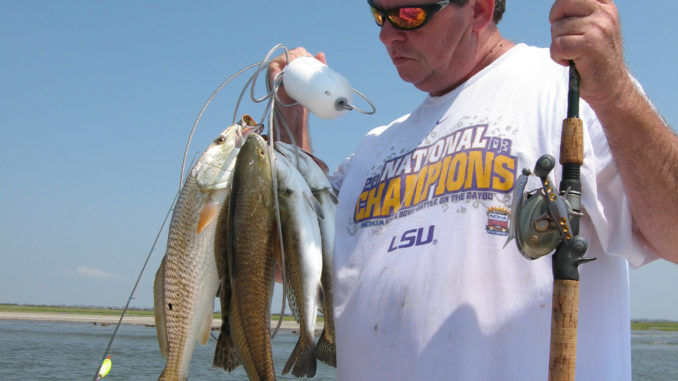
After more than 60 days of fishing closures under the guise of protecting public safety, the state’s top fishery biologist admitted hydrocarbons can’t even pose a danger to anglers and their families.
“(Hydrocarbons) have very little effect on fish tissue in finfish,” Louisiana Department of Wildlife and Fisheries Assistant Secretary Randy Pausina told LouisianaSportsman.com last night (July 6). “Finfish metabolize hydrocarbons through their systems very fast.
“It won’t bio-accumulate in their tissue.”
In other words, humans can’t be harmed by eating fish even if those fish have ingested oil.
This statement was based not only on scientific literature, but has been backed up by test results of hundreds of tissue samples taken from areas closed to fishing due to the oil spill.
“The track record proves that,” Pausina said. “Basically in all basins, no finfish sample has been close to meeting the (consumption) levels set by the (federal agencies).
“They basically came back as non-detectable levels.”
In fact, the danger to the public from eating coastal fish compares to that of eating farm-raised catfish, Pausina said.
“There is the potential to develop a taint, or off flavor or bad smell,” he said.
Pausina explained that “tainted” fish does not equate to “contaminated” fish, saying the former is simply the strong but harmless smell and taste that is not uncommon in catfish.
Although available scientific literature proves fish don’t bio-accumulate hydrocarbons, Pausina went on to say that there could be contamination to the fish’s systems — if not the meat — due to long-term exposure to oil.
“We expect to see clear samples early on, but as this thing continues we don’t know,” he said. “There is the potential for fish to be contaminated. There is the potential for fish to die.”
Additional concerns have been expressed over the past months about potential impacts on fish from Corexit, the dispersant used in huge quantities near the spill site, but Pausina’s agency has admitted that there is no danger from this dispersant.
“The (Environmental Protection Agency) has said Corexit by itself is not toxic, that the oil is not toxic” LDWF Secretary Robert Barham said in an earlier interview.
However, Pausina said even in light of the current science, there remain concerns about what happens when Corexit and oil are mixed.
“Dispersants change oil from the chemical makeup that makes it oil,” he explained. “The question is, ‘What does it change (oil) into, and what effect does that have on a fish?
“We don’t know. The dispersant-treated oil is the real unknown.”
This question mark, it turns out, is apparently what really has driven the agency’s refusal to allow anglers to keep fish even in light of the strong evidence that there is no danger to the public.
“If there wasn’t the dispersant issue, I think we could move forward with a lot of things,” Pausina said.
Tests to determine if there are potential hazards from Corexit or chemically changed oil will be developed in short order, Pausina said, because Corexit maker Nalco Company has finally released the chemical components of the dispersant.
“Now everybody’s got to figure out, ‘What’s the test?’” he said.
And, he admitted, that could take some time.
“It’s something we might not figure out for months or years,” Pausina said.
At the same time, he acknowledged that fish are probably smart enough to leave contaminated waters anyway.
“They have tails, and they can move (away from contaminated areas) very fast,” Pausina said.
While he was frank about the lack of evidence to back up his agency’s stated public-safety concerns, Pausina said he remained supportive of the closures.
“I think it’s prudent of the department to get a handle on the hydrocarbon risks,” he said. “I know that it’s a conservative approach, but I don’t see that we have any choice.”


